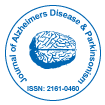The Role of Immune System Activation in Neuroinflammation and Neurodegeneration
Received: 24-Mar-2025 / Manuscript No. JADP-25-167116 / Editor assigned: 26-Feb-2025 / PreQC No. JADP-25-167116 / Reviewed: 12-Mar-2025 / QC No. JADP-25-167116 / Revised: 19-Mar-2025 / Manuscript No. JADP-25-167116 / Published Date: 19-Mar-2025
Description
Neuroinflammation refers to the inflammatory response within the Central Nervous System (CNS), encompassing the brain and spinal cord. Unlike inflammation in other parts of the body, which typically involves peripheral immune cells like neutrophils and macrophages, neuroinflammation is largely mediated by resident immune cells of the CNS, including microglia and astrocytes. While this response is an essential part of the brain's defense against injury, infection, and disease, chronic or dysregulated neuroinflammation is increasingly recognized as a key contributor to a wide range of neurological and neurodegenerative disorders.
In its protective form, neuroinflammation is a necessary response to harmful stimuli such as pathogens, trauma, or toxins. Microglia, the brain’s primary immune cells, are usually in a resting state, monitoring the environment for potential threats. Upon detection of damage or infection, they become activated, change shape, and begin producing cytokines, chemokines, and other signaling molecules. These substances help coordinate an immune response, recruit other glial cells, and clear debris or pathogens from the affected area. Astrocytes also play a supporting role by maintaining the blood-brain barrier, regulating neurotransmitters, and releasing molecules that modulate inflammation.
However, when neuroinflammation becomes chronic or excessive, it can have harmful effects. Persistent activation of microglia and astrocytes leads to the sustained release of pro-inflammatory cytokines such as interleukin tumor necrosis factor and interleukin. These molecules, while beneficial in acute situations, can become neurotoxic over time, leading to neuronal damage, synaptic dysfunction, and even cell death. Furthermore, chronic neuroinflammation can disrupt the blood-brain barrier, allowing peripheral immune cells and potentially harmful substances to enter the CNS, compounding the problem.
Neuroinflammation is now known to play a major role in several neurodegenerative diseases. In Alzheimer’s disease, for example, the accumulation of amyloid-beta plaques and tau tangles activates microglia, which then attempt to clear these aggregates but often fail. Instead, they remain in a perpetually activated state, releasing inflammatory mediators that worsen neuronal damage and accelerate cognitive decline. Similarly, in Parkinson’s disease, misfolded alpha-synuclein protein aggregates are thought to stimulate a chronic inflammatory response, contributing to the degeneration of dopamine-producing neurons in the substantia nigra.
Multiple Sclerosis (MS) is another condition closely linked with neuroinflammation, though its mechanisms are different. MS is primarily an autoimmune disease in which the body’s immune system attacks the myelin sheath surrounding neurons. This inflammatory attack leads to demyelination, impaired signal transmission, and a wide array of neurological symptoms. In MS, both resident glial cells and peripheral immune cells contribute to the inflammatory process, making it a particularly complex and multifaceted disorder.
Beyond classical neurodegenerative diseases, neuroinflammation has also been implicated in psychiatric conditions such as depression, schizophrenia, and autism spectrum disorders. Though the exact mechanisms are still under investigation, there is growing evidence that abnormal inflammatory signaling in the brain can affect neurotransmitter systems, brain connectivity, and neurodevelopmental processes, contributing to the pathology of these disorders.
Conclusion
Neuroinflammation is a double-edged sword vital for protecting the brain from injury and infection, but potentially harmful when unregulated or chronic. It plays a central role in the pathology of various neurological and psychiatric diseases, making it a key target for future therapies. Continued research into the cellular and molecular mechanisms of neuroinflammation holds promise for improving the diagnosis, treatment, and prevention of numerous CNS disorders. Researchers are actively exploring therapeutic strategies to modulate neuroinflammation. These include anti-inflammatory drugs, immunotherapies targeting specific cytokines, and agents that promote resolution of inflammation rather than suppression.
Citation: Demarco F (2025). The Role of Immune System Activation in Neuroinflammation and Neurodegeneration. J Alzheimers Dis Parkinsonism 15:62
Copyright: © 2025 Demarco F. This is an open-access article distributed under the terms of the Creative Commons Attribution License, which permits unrestricted use, distribution, and reproduction in any medium, provided the original author and source are credited.
Select your language of interest to view the total content in your interested language
Share This Article
Recommended Journals
Open Access Journals
Article Usage
- Total views: 342
- [From(publication date): 0-0 - Dec 10, 2025]
- Breakdown by view type
- HTML page views: 261
- PDF downloads: 81
